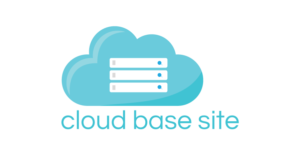When it comes to managing finances, every little bit helps, including the humble grocery list. Often overlooked as just a simple shopping aid, your grocery list holds the potential to become a powerful tool in your financial planning arsenal. By transforming your approach to how you create and use your grocery list, you can uncover insights into your spending habits, budget better, and even save money. Let’s explore how this everyday item can be elevated to a strategic financial planner.
The first step in leveraging your grocery list as a financial tool is to start with meticulous planning. Before even stepping into a store, consider your meals for the week and write down the necessary ingredients. This method not only prevents impulse buys but also ensures you purchase only what you need, reducing waste and saving money. For those looking to delve deeper into financial strategies, the roboforex help center offers resources that can guide you in aligning your grocery shopping with broader financial goals.
Next, categorize your grocery list. Break it down into essentials, such as bread, milk, and eggs, and non-essentials, like snacks and luxury items. This simple act of categorization can provide a clear picture of where your money is going and help you make adjustments where necessary. Over time, tracking these categories can reveal trends in your spending and inspire more informed choices, aligning your grocery habits with your financial objectives.
Moreover, use your grocery list to practice price tracking. By noting down the prices of regularly purchased items, you can become more aware of price fluctuations and seasonal changes in food costs. This awareness can lead you to shop smarter perhaps buying in bulk during sales or choosing alternative brands that offer the same quality at a lower price.
Technology can also enhance the financial benefits of a grocery list. Numerous apps sync your list with current store promotions and discounts, helping you make the most of available savings. Some apps even provide cash back on certain purchases, turning your grocery shopping into an opportunity to earn money back on your expenses.
Additionally, integrating your grocery list with your overall budget can be incredibly beneficial. Allocate a specific portion of your monthly budget to groceries and use your list to help adhere to this limit. If you find yourself consistently under-budget, you might redirect the surplus to savings or other financial goals, such as paying off debt or investing.
Lastly, sharing a grocery list within a household can foster a team approach to financial management. When everyone contributes to the creation and execution of the list, it encourages a shared responsibility for spending and savings, reinforcing healthy financial habits among all family members.
By transforming your grocery list into a financial planning tool, you not only streamline your shopping experience but also enhance your overall financial health. This approach allows you to gain control over your spending, save money, and achieve your financial goals with something as simple as a list. So next time you jot down your grocery needs, remember that this list could be your key to financial savvy.

